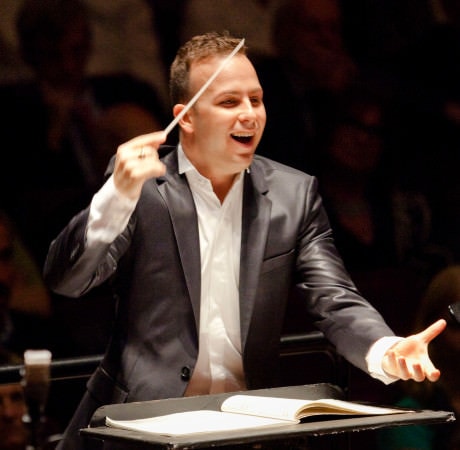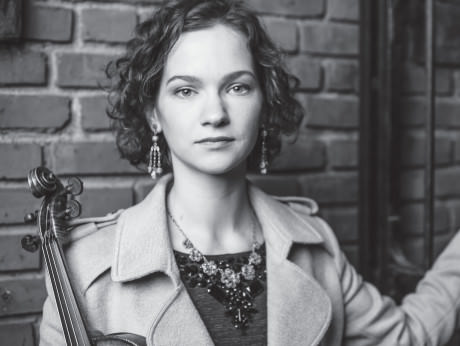Composers wrote great ballet and opera music for two reasons. The first was to help dancers and singers to portray characters and tell their stories. The second was to have the music led in the 21st century by arguably America’s leading conductor, Yannick Nézet-Séguin.

Okay, granted. Igor Stravinsky didn’t know about Maestro Nézet-Séguin when he wrote The Firebird for the Ballet Russes in Paris in 1910. And Georges Bizet didn’t know about him when he wrote Carmen for the Opéra-Comique, also in Paris, in 1875.
But from wherever Stravinsky and Bizet are listening in now, I hope they are reveling in the way that Mr. Nézet-Séguin led the Philadelphia Orchestra through the complete score of The Firebird and one of several available transcriptions of themes from Carmen at The Music Center at Strathmore on Monday evening, December 7, 2015.
The Philadelphia Orchestra is near the top rank of world orchestras to begin with, and for many years it has baked into its schedule an annual visit to our area sponsored by Washington Performing Arts. But the orchestra has produced an extra dollop of dynamism since Mr. Nézet-Seguin took the podium in 2012, especially in music built on such explicit levels of drama.
The 40-year-old conductor has a way of engineering compelling and unanimous musical shifts from his band over the course of a passage, a single measure, or even a single beat. From the audience you can catch these interpretive shifts in either his right baton hand or his free left hand, and the responsiveness from up to 100 musicians at a time is a powerful thing to behold.
The Philadelphians repeatedly applied gradations of dynamics and color so that a single note or chord would begin in one sonic universe and end in another. At one moment in the Carmen suite, the full orchestra appeared to pulse an accent, or extra filip, at the end of the note they were playing just before the next downbeat. In The Firebird, sections of the orchestra would match one another’s gestures on articulation or phrasing, sometimes entering and then diving in dynamics to make way for the next musical motive.
The orchestra made a point of performing the full 50-minute ballet rather than the excerpts usually heard in the concert hall, requiring some active listening and imagination as Mr. Nézet-Séguin built the drama block-by-block. But the finales of both pieces were as thrilling as you can get in the concert hall. The Philadelphians took the famous Toreadors section of the Carmen suite so fast my mental bullring started to spin in a circle. The end of the Firebird lashed the Philadelphia Orchestra’s noted strings-and-brass combination to Strathmore’s expansive acoustics for a glorious sound.
https://www.youtube.com/watch?v=DD2G8d3l2Zw
At this point I owe you, dear reader, two pieces of business.The first is the pronunciation of this French-Canadian man’s name. The best way to communicate that is to let Mr. Nézet-Séguin himself tell you in this humorous interview by New York-based cellist/comedian (I’m not making that up) Nick Canellakis.
I also owe you a typical classical music complaint about how frequently re-workings of Carmen appear on all types of concert programs from solo piano recitals to symphony concerts. So here goes … except I’m not going to do it. The Philadelphia Orchestra’s Carmen suite was so fresh, so goosed up in speed and excitement, and so alive with nuances that can even be missed in the opera house that it was as if it had never been played before.
Actually, on Monday night those who came to hear Carmen were probably equaled by those who came to hear the far less known Violin Concerto No. 4 by 19th-century Belgian-French violinist/composer Henri Vieuxtemps. The reason for that was the violin soloist, Maryland native Hilary Hahn, who has favored bringing the music of Vieuxtemps to the public as well as many innovative projects involving today’s new composers.
Ms. Hahn’s abundant strengths made an imperfect composition a meaningful experience. From the bottom to nearly the tippy-top of the violin she hits notes with dead-center intonation, and her technique is completely seamless. Ms. Hahn suffers absolutely zero loss of tone or control when she starts to pull out two or more notes at a time – a good thing since Vieuxtemps didn’t spare these “double-stops” in his fourth concerto.

At the same time Ms. Hahn is not necessarily the most lyrical of violinists. Her vibrato is fairly contained and often pulled back to a minimum at the beginning of phrases, rendering a straightforward rather than emotion-ripping feel to her music-making. This was also reasonably well-suited for the Vieuxtemps, which opens with a slightly too long (at four full minutes) orchestral exposition without the soloist and seems to range over a wide and not always logical progression of declamatory and stormy moods.
Some of Vieuxtemps’ melodic phrases finish off with a rather too obvious scale passage back to where the music is sitting at the time, no doubt accounting for his relative obscurity compared to other Romantic-era composers, French or otherwise. But Ms. Hahn’s fluency made for an effective go at the concerto, especially in the third of the concerto’s four movements. It’s a scherzo in which she skittered across and around and up and down her fiddle, with Mr. Nézet-Séguin guiding the orchestra behind her in entertaining accompaniments and counter-punches.
Running Time: Two hours and 10 minutes, with one 20-minute intermission.
The Philadelphia Orchestra presented by Washington Performing Arts performed on Monday, December 7, 2015 at 8 p.m. at The Music Center at Strathmore – 5301 Tuckerman Lane in North Bethesda, MD. For Washington Performing Arts’ complete upcoming schedule, including a solo concert by violinist Hilary Hahn on April 19, 2016, see their ticket calendar.




